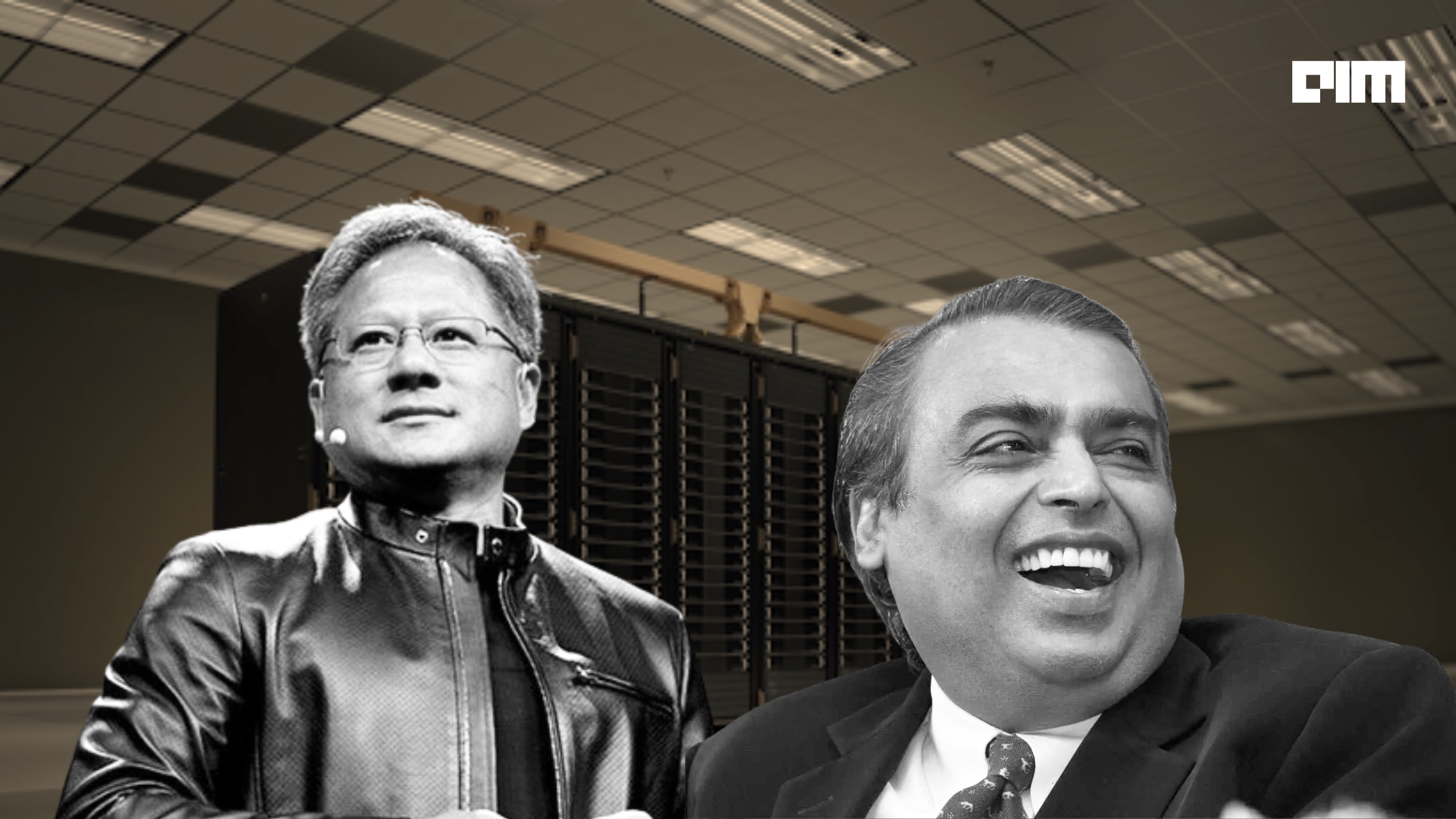
Five years ago, Jensen Huang personally hand delivered the first NVIDIA DGX AI supercomputer to a startup, none other than, OpenAI. Now, for Indian companies – let’s say Reliance and Tata – to reach OpenAI-level of success, how much time will India take?

“OpenAI currently has more than 10,000 GPUs – i.e. close to 40 AI supercomputers,” said Huang Jensen, in an exclusive interaction with AIM, explaining that each AI supercomputer rack consists of 256 GPUs (as shown below).

Huang swiftly did the math and estimated that India will get about 10s of thousands of GPUs in order to build infrastructure – i.e. about 1,00,000 GPUs and below, or less than 400 AI supercomputers.
Huang is very optimistic about India AI’s future, where he said if US companies, like OpenAI, required months to train GPT models, India would achieve similar results in a matter of weeks.
“We are going to bring out the fastest computers in the world. These computers are not even in production [so far]. India will be one of the first countries in the world [to get them],” he said, confirming that these would be faster than anything the world has ever seen and super cost-effective too. He said that by the end of next year, India will have AI supercomputers that are an order of magnitude faster (i.e. 50 to 100 times faster), inevitably lowering the cost of training foundational models.
To begin with, Reliance and Tata will have access to DGX Cloud, a service that allows any business to use its own AI supercomputer through a regular web browser, removing the complexity of acquiring, deploying and managing on-premises infrastructure. “You can build a large language model, like a ChatGPT for $10-$20 million,” said Jensen, on how they have made it affordable for anyone and everyone to build foundational models leveraging existing cloud infrastructure.
He also believes that NVIDIA’s most advanced NVIDIA® GH200 Grace Hopper Superchip and NVIDIA DGX Cloud, an AI supercomputing service in the cloud, would accelerate this process.
Cloud, an AI supercomputing service in the cloud, would accelerate this process.
Meanwhile, OpenAI opted for Microsoft’s Azure to train its models including GPT-3 and GPT-3.5. Interestingly, It was the first public cloud to incorporate NVIDIA’s advanced AI stack, adding tens of thousands of NVIDIA A100 and H100 GPUs. Only two years ago, Microsoft developed a supercomputer for OpenAI. It was a single system with over 285,000 CPU cores, 10,000 GPUs and 400 gigabits per second of network connectivity for each GPU server.
Competitive Edge
“India has lots of data,” said Jensen, touching upon the diversity of languages and dialects. He said – “There’s no reason for India to export data to western companies.” and he thinks India has the capability to make an in house LLMs and foundational models.
“You have all of your own data. You have the great talent of computer scientists. You produce more computer scientists than any country on the planet; Infrastructure for producing computer scientists. You have an infrastructure for that, right? It’s called AI – Actual Intelligence,” said Jensen, citing IITs.
However, he said India lacks infrastructure – “not roads and bridges,” but AI infrastructure. He said with NVIDIA supercomputers coming in, that has also been taken care of. “You have everything you need to build and use the AI here. But you need to have infrastructure. Just like electric power plants and steam engines, this is now the production of intelligence.” he stressed.
India’s AI Revolution is Here
Reliance and Tata partnership with NVIDIA, alongside its vision to reskill the Indian IT workforce, is just the beginning. Huang said Reliance will be using NVIDIA’s infrastructure to create customer-centric AI applications and services for its 450 million Jio customers and provide energy-efficient AI infrastructure to scientists, developers and startups across India.
On the other hand, Tata would be utilising NVIDIA’s expertise and infrastructure to create generative AI applications for enterprise. “These business applications could be for the legal department, the HR department or for the sales department,” he added. This would be done by expanding Tata’s cloud infrastructure service with NVIDIA AI supercomputing to support growing demand of generative AI startups and processing of large language models.
TCS will utilise the AI infrastructure and capabilities to build and process generative AI applications. Additionally, TCS will upskill its 600,000-strong workforce leveraging the partnership.
Meanwhile, Tata Communications’ robust global network combined with the AI cloud will empower enterprises to transfer data across the AI cloud at high speeds, enabling them to effectively bring the AI cloud to the doorstep of every enterprise.
The post How Many GPUs is India Buying from NVIDIA? appeared first on Analytics India Magazine.